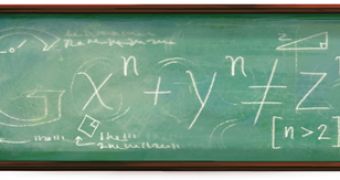If you've done a Google search today, you may have noticed an interesting doodle of a blackboard with an equation written in chalk and Google erased underneath. The equation in question was formulated by French amateur mathematician Pierre de Fermat and remained unsolved for some 358 years.
To celebrate the mathematician's birthday, Google used what has remained known as Fermat's Last Theorem, regarded as one of the toughest unsolved theorems in history, until it was proven very recently.
The theorem states that no positive integers can satisfy the equation xn + yn = zn, for any integer n greater than 2.
Fermat provided proof for the special case where n=4, but left the theorem as is for others to solve.
He famously scribbled it on the margin of his copy of Arithmetica by Diophantus of Alexandria where he wrote "I have discovered a truly marvelous proof of this which this margin is too small to contain."
This was in 1637. He never provided the proof for the theorem, leaving mathematicians stuck trying to solve it for almost four centuries.
The Google doodle plays on his words, reading : "I have discovered a truly remarkable proof which this doodle is too small to contain."
The theorem was labeled as the "most difficult math problem" and was even listed in the Guinness Book of World Records until it was finally solved for any value of n in 1995.
The solution was provided by mathematician Gerhard Frey but proven by Ken Ribet and Andrew Wiles, both of which provided half of the proof.
Of course, the mystery remains to whether Fermat really did have a general proof for the theorem as he claimed. The final solution used advanced mathematics developed in the twentieth century, so if Fermat did have proof, it wasn't this one.

 14 DAY TRIAL //
14 DAY TRIAL //